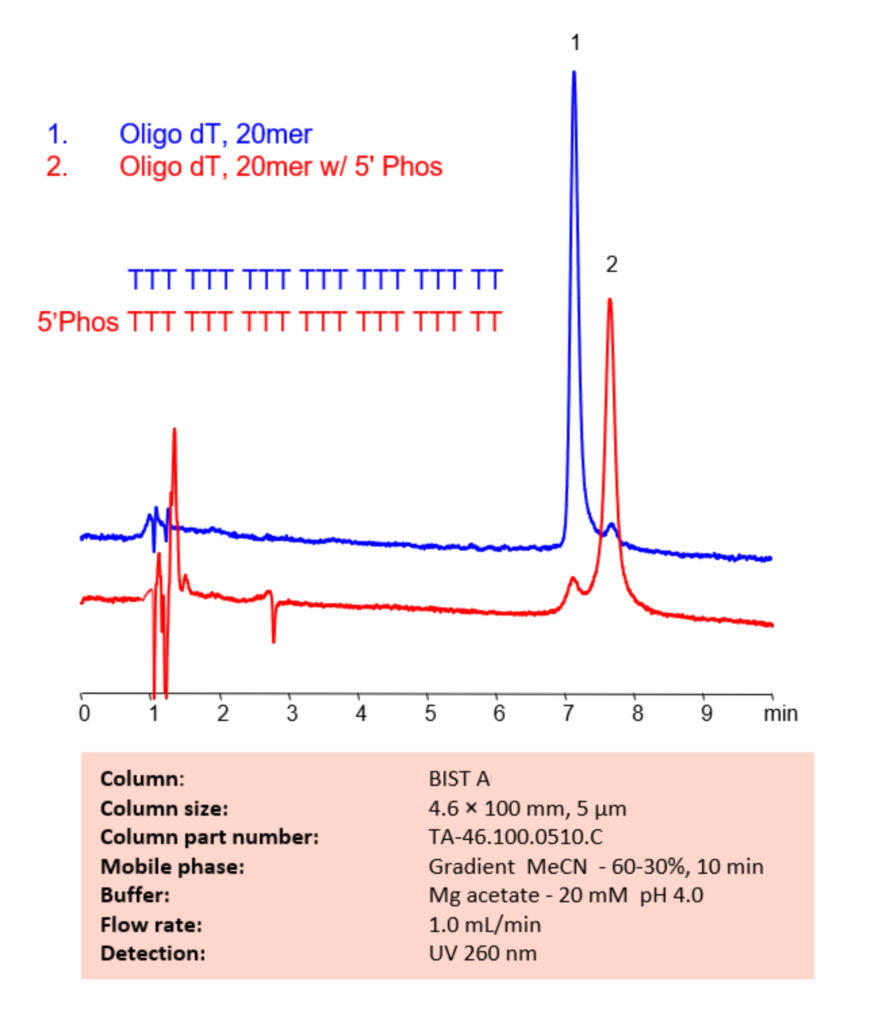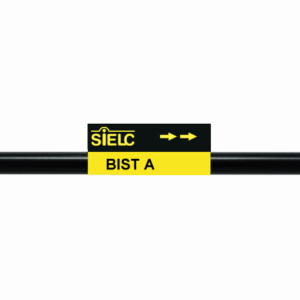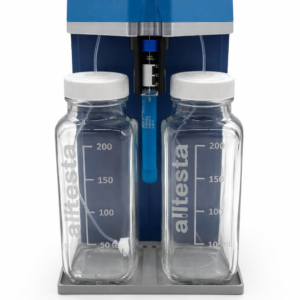Separation type: Bridge Ion Separation Technology, or BIST™ by SIELC Technologies
HPLC Method for Analysis of Oligonucleotides on BIST A Column by SIELC Technologies

High Performance Liquid Chromatography (HPLC) Method for Analysis of Oligonucleotides
A 20 mer oligonucleotide is a short DNA molecule that is 20 nucleotides in length. Oligonucleotides of this length are commonly used in molecular biology research for a variety of applications, including PCR, DNA sequencing, gene expression analysis, and gene editing.
This is an example of an oligonucleotide sequence with a 5′ phosphate group. The sequence is a single-stranded DNA molecule that consists of a stretch of thymine (T) nucleotides, and its length is 20 nucleotides. The “5’Phos” notation indicates the presence of a phosphate group attached to the 5′ end of the oligonucleotide.
The sequence of the oligonucleotide is:
5′ Phos TTT TTT TTT TTT TTT TTT TT
The 5′ phosphate group is often added to oligonucleotides used in various molecular biology techniques, such as DNA sequencing or cloning, to improve their stability and to facilitate their ligation to other DNA molecules. The presence of the phosphate group can also affect the efficiency of enzymatic reactions, such as ligation or phosphorylation.
Using SIELC’s newly introduced BIST™ method, this oligonucleotide can be retained on a negatively-charged, cation-exchange BIST™ A column. There are two keys to this retention method: 1) a multi-charged, positive buffer, such as TMEDA formate, which acts as a bridge, linking the negatively charged dye to the negatively-charged column surface and 2) a mobile phase consisting mostly of organic solvent (such as MeCN) to minimize the formation of a solvation layer around the charged analytes. Using this new and unique analysis method, oligonucleotide can be separated, retained, and detected at 260 nm.
Please read more on oligonucleotides analysis by HPLC in our April’s 2023 newsletter.
Condition
| Column | BIST A, 4.6 x 100 mm, 5 µm, 100 A, surface coated |
| Mobile Phase | Gradient MeCN – 60-30%, 10 min |
| Buffer | Mg acetate pH 4.0 – 20 mM |
| Flow Rate | 1.0 ml/min |
| Detection | UV 260 nm |
Description
| Class of Compounds | Oligonucleotides |
| Analyzing Compounds | Oligonucleotides |
Application Column
BIST A
Column Diameter: 4.6 mm
Column Length: 100 mm
Particle Size: 5 µm
Pore Size: 100 A
Column options: surface coated





